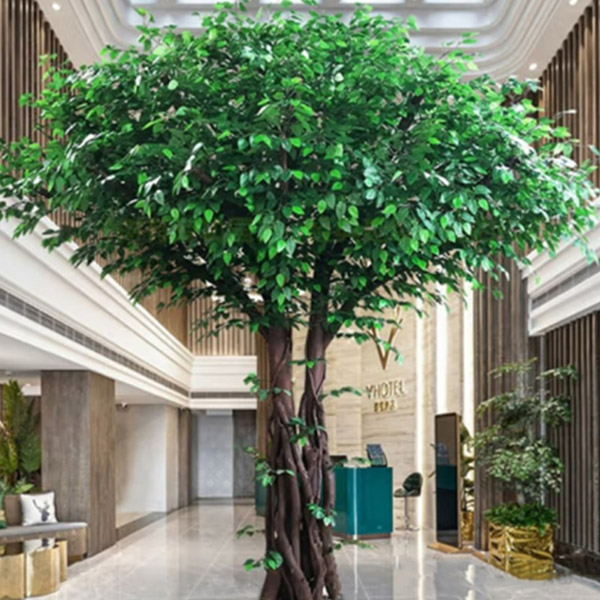In modern home decoration, artificial plants are favored by everyone because they do not require much maintenance. The banyan tree, in particular, with its dense leaves and upright posture, adds a touch of vitality to the space. Today, Xiaobian will take you to discuss how to make a simulated banyan tree by hand, so that your home environment is full of natural breath.

Step 1: Prepare the materials
The first step in making a ficus tree is to get all the materials you need. You'll need to buy a long, thin stick for the trunk, several green imitation leaves (of a variety of materials such as plastic or cloth), some brown string or cotton thread to simulate the texture of the bark, glue, scissors, and some small ornaments (such as fake soil or pebbles).
Step two: Make the trunk
The trunk is the core part of the banyan tree, which can be made by attaching sticks to a base to ensure the stability of the trunk. Use brown string or cotton thread to start at the bottom and gradually wind upward to simulate the texture and texture of the bark. In order to make the trunk more three-dimensional, you can add some small details from time to time during the process of winding the rope, such as small pieces of brown paper cut out with scissors and pasted on the trunk to enhance the sense of realism.
Step 3: Make the branches
When making branches, you can choose to glue several thin wires to the trunk, so that the branches will be more natural and layered. The wire can be bent into different shapes to simulate the branch distribution of the banyan tree. To ensure that the branches are securely attached to the trunk, use hot glue to reinforce each connection point.
Step 4: Add blades
Leaves are the key decorative elements of simulated ficus trees. Paste the simulated leaves on the branches one by one to simulate the natural state of the banyan tree as much as possible. When pasting the leaves, you can notice the layering of the banyan leaves, and the leaves are distributed more evenly, but without losing their natural appearance. To add realism, add some larger leaves to the top of the tree or at the end of the branch.
Step 5: Beautify the base
In order to make the simulated banyan tree look more realistic, some decorations can be added to the base. Glue small stones or fake soil to the bottom to simulate the growth environment of tree roots. If you want to further enhance the effect, you can add some small decorations on the base, such as miniature flower POTS, small animals, etc., to make the overall effect more life-like.
Step 6: Finishing
After the simulation of the banyan tree is completed, the overall effect can be finished. Check the fastening of the blades to make sure there are no loose places. The details of the trunk and branches can also be fine-tuned to make them more in line with the characteristics of the actual banyan tree.
Through the above steps, you can make a vivid ficus tree by yourself. Whether placed in the living room, office or study, it will add a natural freshness to your space.